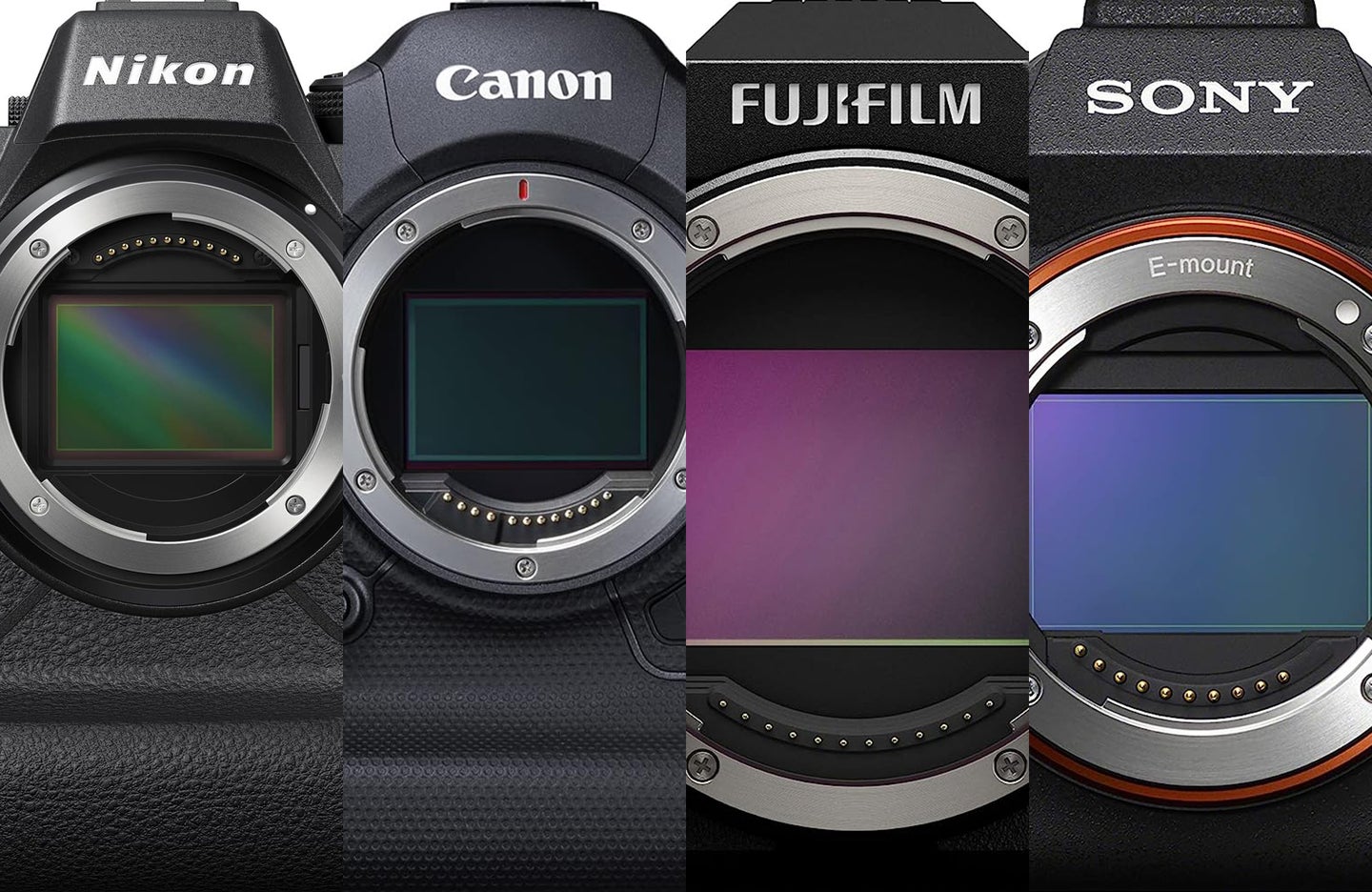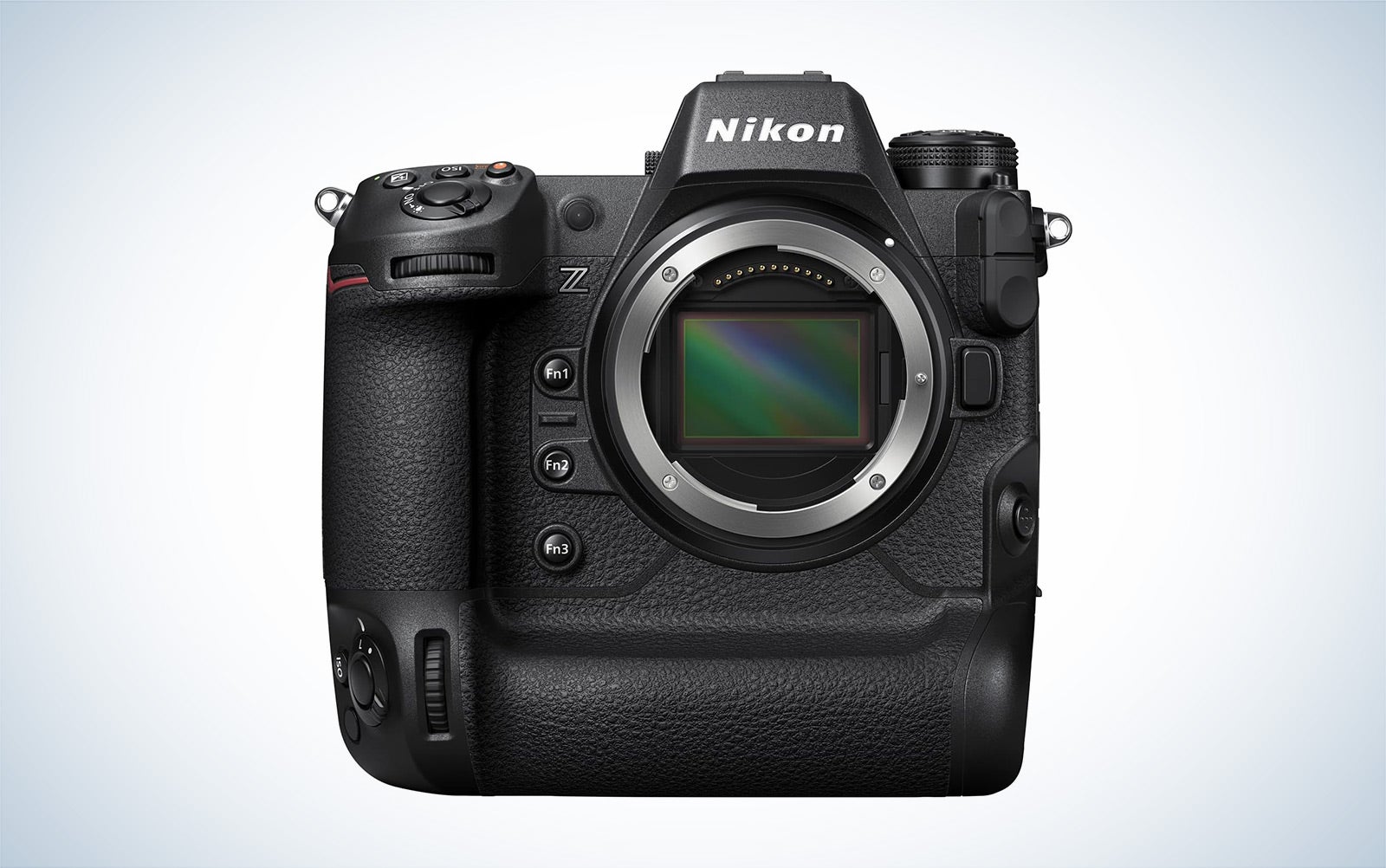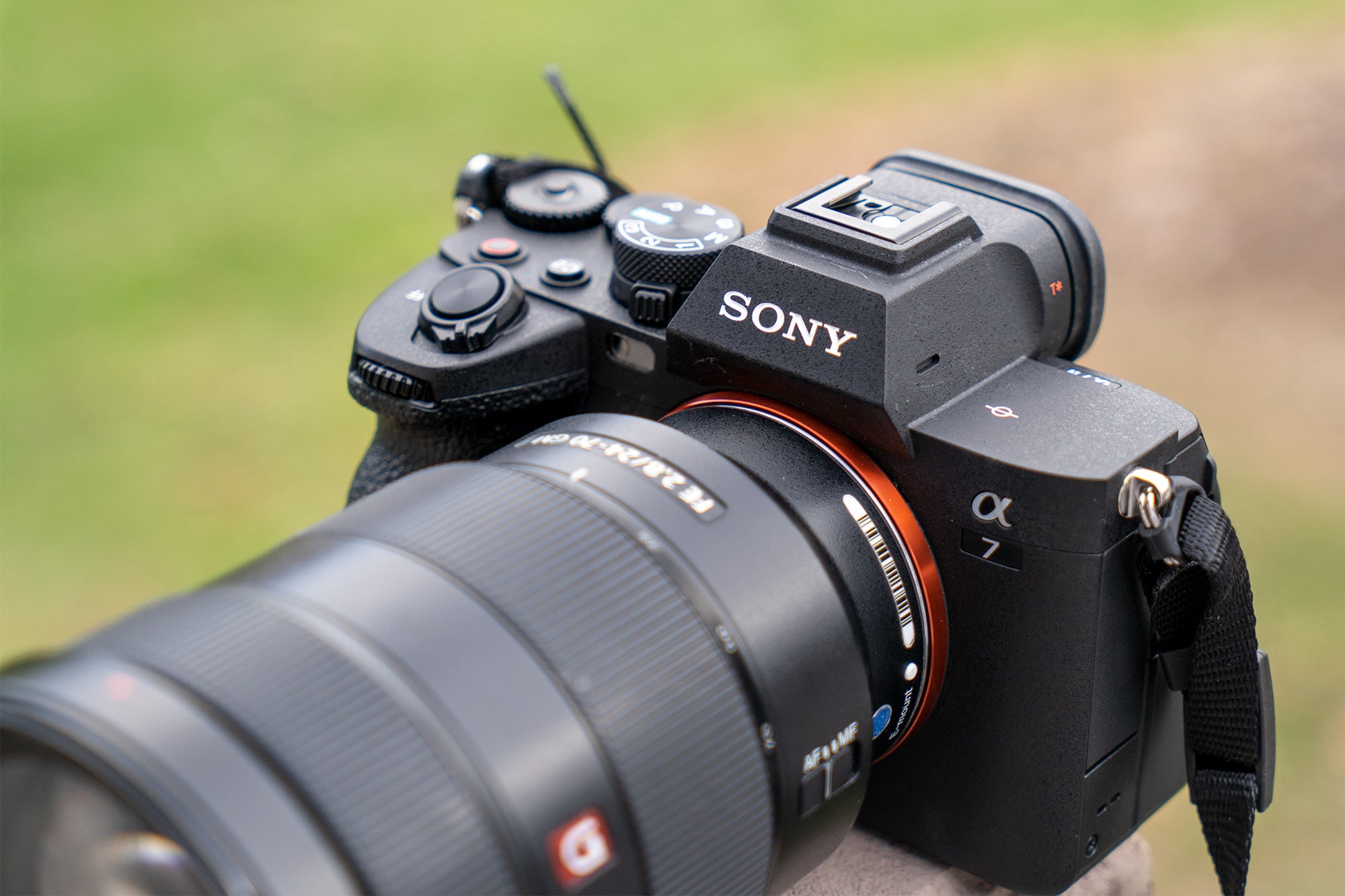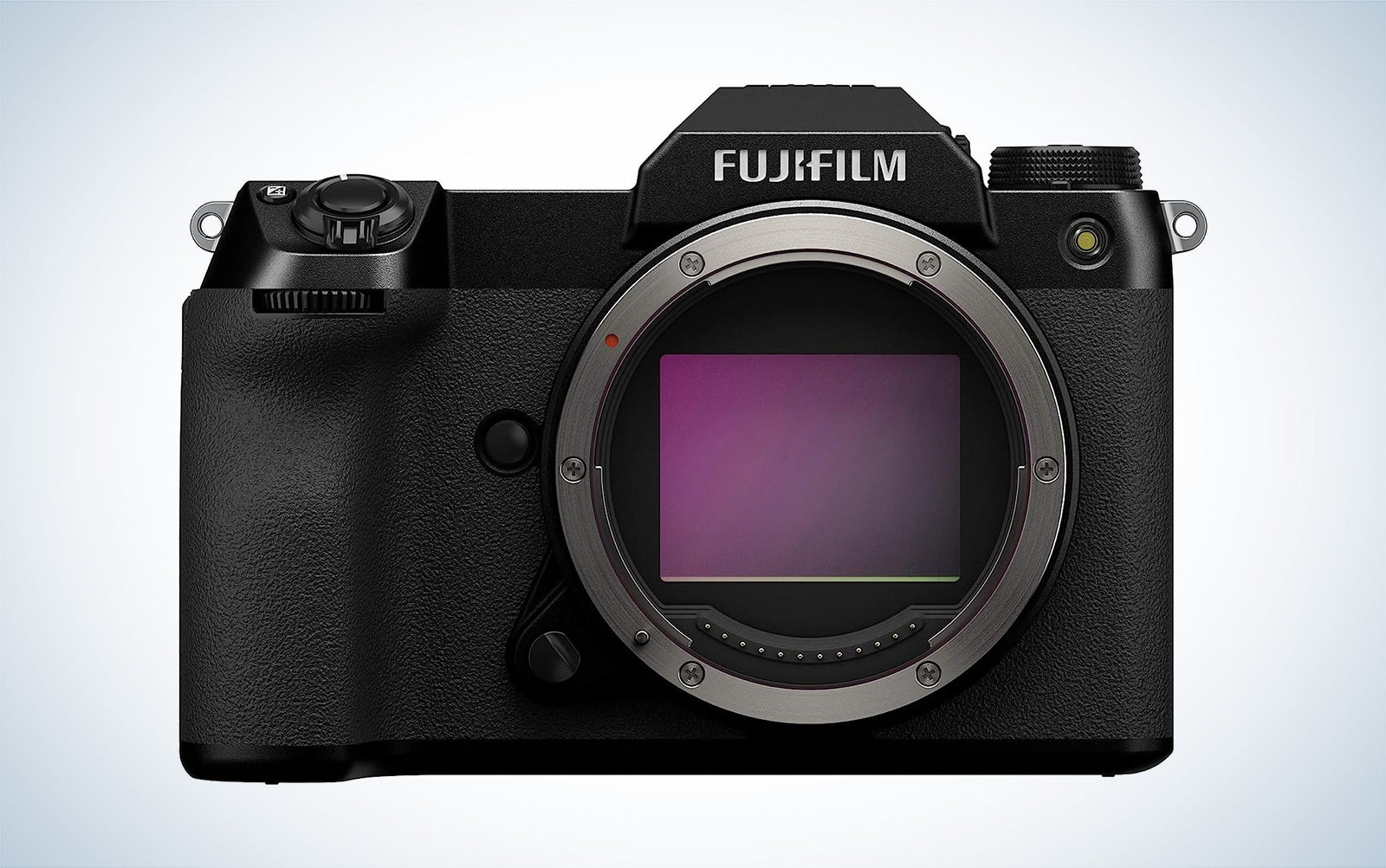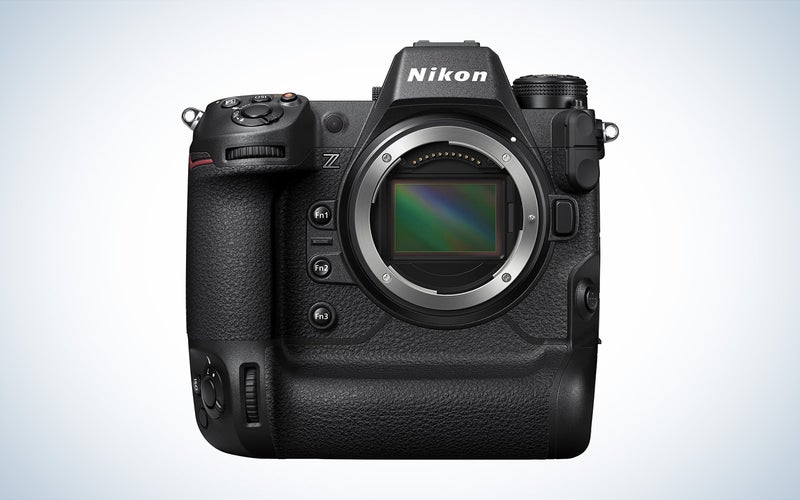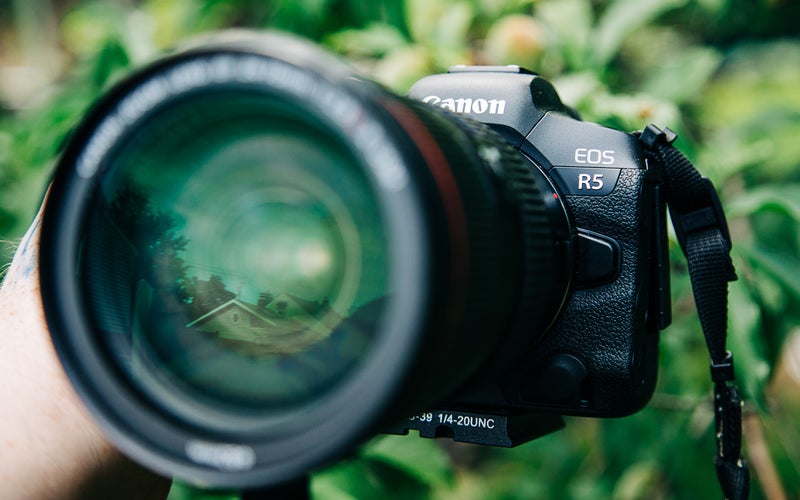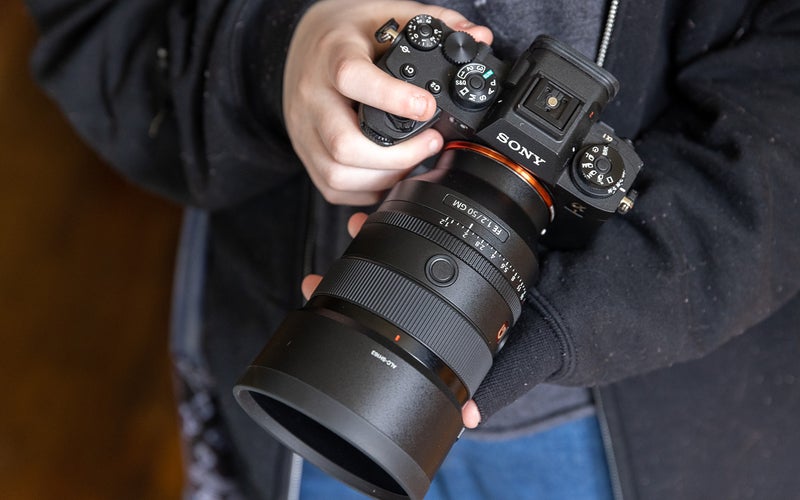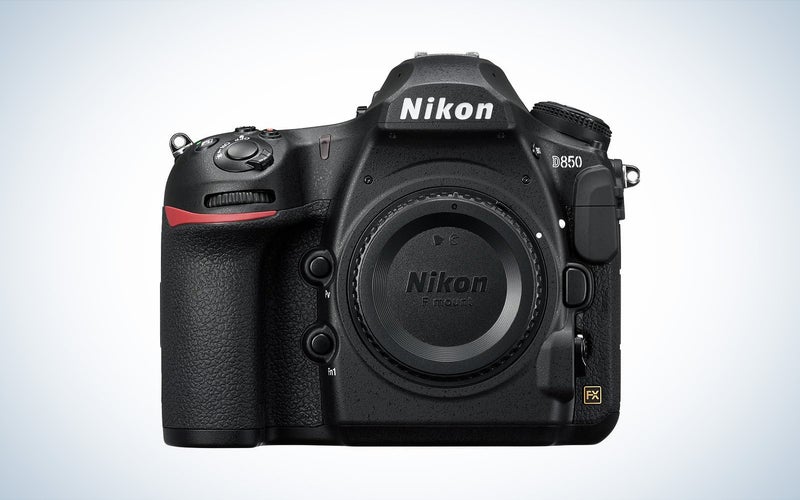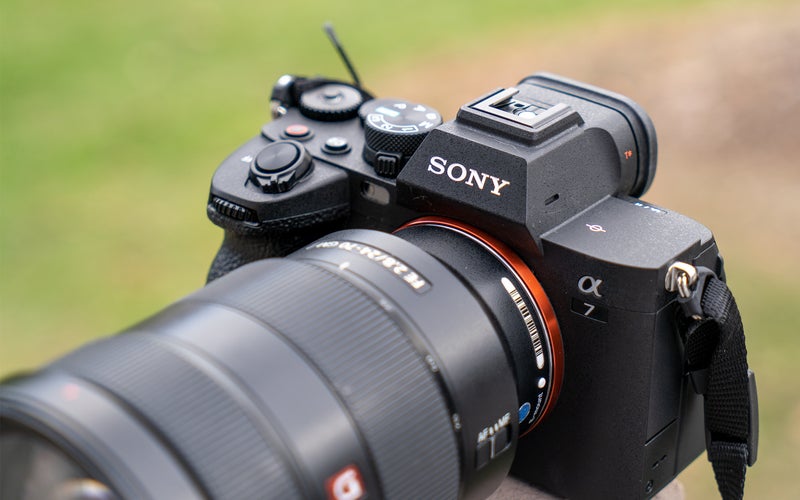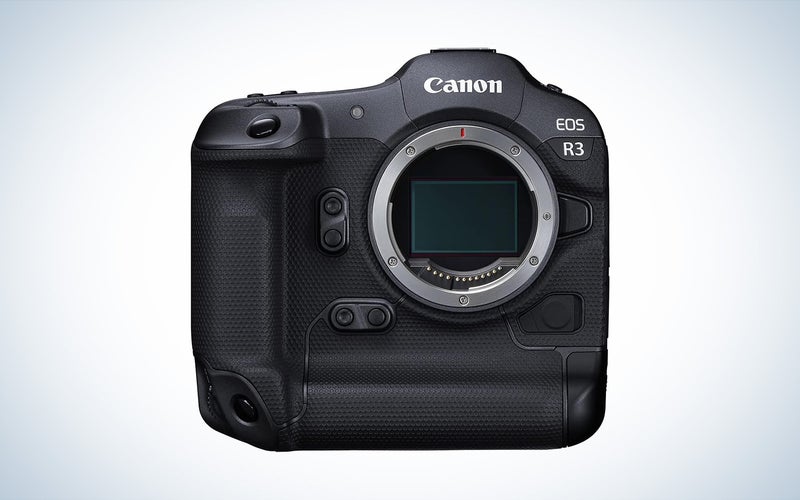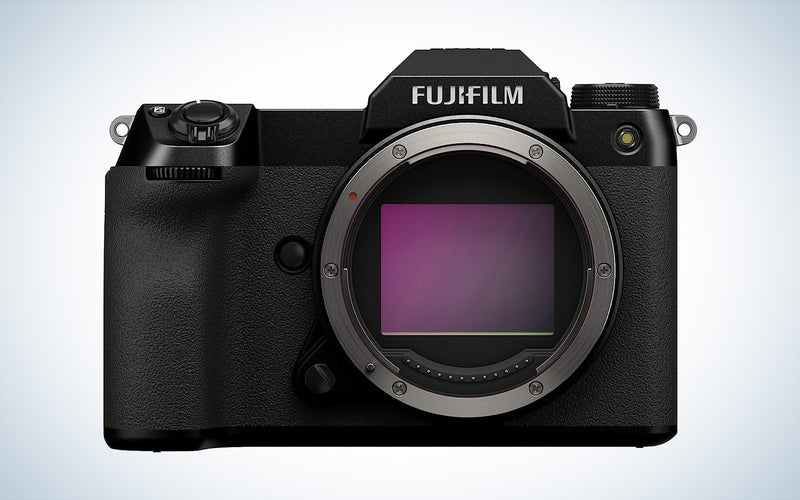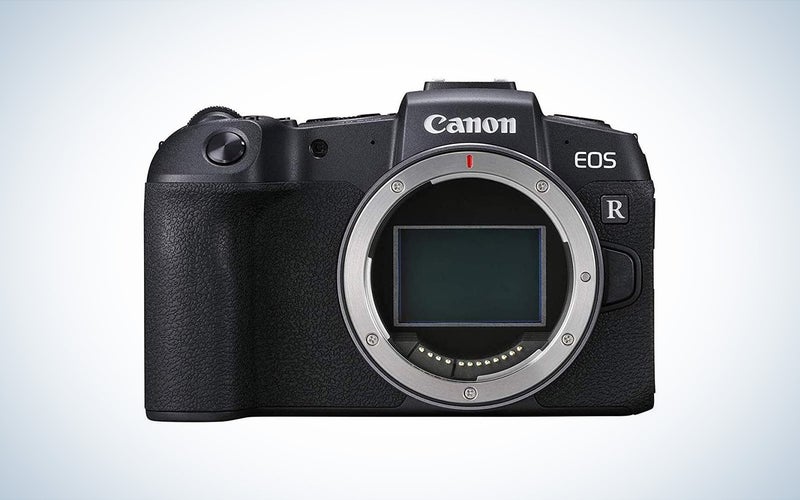We may earn revenue from the products available on this page and participate in affiliate programs. Learn more ›
Professional photographers demand a lot from their gear, so professional cameras tend to have big sensors, fast shooting speeds, and impressive image quality. They also tend to be expensive. But when your camera gear pays your bills, it’s worth making that investment. Different genres of photography have different requirements, but the best professional cameras offer all the features that working photographers need to get the job done.
- Best overall: Nikon Z9
- Best overall runner-up: Canon EOS R5
- Best for portraits: Sony A1
- Best DSLR: Nikon D850
- Best for hybrid shooters: Sony a7 IV
- Best for sports: Canon EOS R3
- Best high resolution: Fujifilm GFX 100S
- Best budget: Canon EOS RP
How we chose the best professional cameras
When selecting the products that appear in this buying guide, it was important to choose cameras that can stand up to the rigors of life as a professional photographer. Working professional photographers generally require cameras with large sensors, fast shooting capabilities, and the ability to create high-resolution images. Because of these features, the cameras that appear in this guide tend to be pricey.
Beyond general specs and features, we considered the different kinds of pros that certain gear would be appropriate for. A sports photographer generally has very different needs from a camera than someone who works in a studio specializing in still life or beauty. Finally, our selections were made through a combination of hands-on experience, editorial reviews, and user feedback.
The best professional cameras: Reviews & recommendations
Whether you earn your living making portraits, documenting landscapes, capturing sports, or creating videos, these professional-grade cameras will live up to your expectations.
Best overall runner-up: Nikon Z9
Nikon
Specs
- Resolution: 45.7 megapixels
- Sensor size: Full-frame
- Lens mount: Nikon Z
- Image stabilization: Sensor-Shift, 5-Axis
- Memory card slots: Dual slot: CFexpress Type B / XQD
- Weight: 2.9 pounds
- Dimensions: 5.9 x 5.9 x 3.6 inches
Pros
- Fast, high-resolution sensor
- 20 fps raw burst shooting
- Advanced video specs
- Pro-level handling and build
Cons
- Bulky form factor isn’t for everyone
The Nikon Z9 is an impressive beast of a camera, which is why it earned our Camera of the Year award in 2022. Nikon built the camera around a 45.7-megapixel BSI stacked CMOS, which is perfect for those who want highly detailed images. It is capable of fast burst shooting (up to 20 fps in full-res raw mode) and can buffer over 1000 raw files in a single burst. And the body of the camera is built for working professionals with robust dust and moisture resistance and an ergonomic design with a built-in vertical grip.
The Z9 is a highly capable camera for video shooters as well. It can record up to 8K 30p video or 4K up to 120p. And, for situations where you need more detail and sharpness, you can take advantage of oversampled UHD 4K (from an 8K area) at up to 60p. The Z9 is fitted with an advanced autofocus system for fast, reliable, and accurate focusing, even with fast-moving subjects. And it can automatically detect nine distinct subjects, including humans, animals, airplanes, and bikes.
Best overall runner-up: Canon EOS R5
Stan Horaczek
Specs
- Resolution: 45 megapixels
- Sensor size: Full-frame
- Lens mount: Canon RF
- Image stabilization: Sensor-Shift, 5-Axis
- Memory card slots: Slot 1: CFexpress Type B, Slot 2: SD/SDHC/SDXC (UHS-II)
- Weight: 1.62 pounds
- Dimensions: 5.43 x 3.84 x 3.46 inches
Pros
- Accurate and fast focus tracking
- Excellent image quality
- Fully articulating screen
- Good for 4K video
Cons
- 8K video isn’t very practical
- Prone to overheating when shooting video for a long time
The Canon EOS R5 snags a tie for our pick of the best overall camera for professionals thanks to its 45-megapixel sensor, impressive continuous shutter speed, and video chops. It features in-body image stabilization that can reduce shake up to eight stops and a powerful Dual Pixel AF with 1053 AF points. Its fully-articulating touchscreen is great for video shooting or for stills shooters who favor odd angles. It features two memory card slots—one for SD and one for faster CFExpress cards.
The R5 has a weather-sealed body with a rugged build that can stand up to the rigors that a professional photographer puts their gear through. Although the camera can technically shoot 8K video, the footage fills cards quickly, and the camera will overheat when shooting video for long periods of time. It’s much more suited for shooting 4K video, although if you are filming for a long time, it’s not unusual to get high-temp warnings. If you are a professional photographer who occasionally needs to capture clips or BTS footage, the Canon R5 is an extremely solid choice. Ultimately the R5 is a versatile tool for professional photographers who specialize in weddings, events, portraiture, and more.
Read our full review of the Canon EOS R5.
Best for portraits: Sony a1
Stan Horaczek
Specs
- Resolution: 50.1 megapixels
- Sensor size: Full-frame
- Lens mount: Sony E
- Image stabilization: Sensor-Shift, 5-Axis
- Memory card slots: Dual Slot: CFexpress Type A / SD (UHS-II)
- Weight: 1.6 pounds
- Dimensions: 5.07 x 3.81 x 2.74 inches
Pros
- Super fast capture
- 8K video that doesn’t cause overheating issues
- Advanced AF settings
- Excellent dynamic range
Cons
- Expensive
- No articulating screen
The Sony A1 is a high-end full-frame camera built around an impressive 50-megapixel sensor. Sony built this camera with the professional working photographer in mind. That high-resolution sensor also means it can handle long bursts of up to 30 fps even when capturing full-resolution photos. It offers fast autofocus with advanced settings for tracking faces, eyes, and even animals.
On the video front, the A1 can shoot oversampled 8K video at 30 fps and oversampled 4K up to 120 fps—making it a great choice for hybrid shooters. It packs all of this tech into an impressively compact body that’s a similar size to Sony’s a7 series. If you are a professional who prefers to shoot Sony, you can’t go wrong with the A1.
Read our full review of the Sony A1.
Best DSLR: Nikon D850
Nikon
Specs
- Resolution: 45.7 megapixels
- Sensor size: Full-frame
- Lens mount: Nikon F
- Image stabilization: None
- Memory card slots: Slot 1: SD/SDHC/SDXC (UHS-II). Slot 2: CFexpress Type B / XQD
- Weight: 2.01 pounds
- Dimensions: 5.7 x 4.9 x 3.1 inches
Pros
- High-end sensor
- Excellent optical viewfinder
- Impressive dynamic range
Cons
- Older technology
- Slow burst speeds
Although these days, most professional photographers are upgrading to mirrorless cameras, there are some who still prefer a DSLR. In a field that’s dominated by mirrorless cameras, the Nikon D850 remains a highly capable tool for photographers who don’t need particularly fast burst speeds. This 45-megapixel camera offers extremely fast autofocus and results in beautiful high-resolution images. It can record 4K video and 8K time-lapses. Although it was released way back in 2017, it remains one of the best DSLRs on the market.
Best for hybrid shooters: Sony a7 IV
Abby Ferguson
Specs
- Resolution: 33 megapixels
- Sensor size: Full-frame
- Lens mount: Sony E
- Image stabilization: Sensor-Shift, 5-Axis
- Memory card slots: Slot 1: CFexpress Type A / SD (UHS-II), Slot 2: SD/SDHC/SDXC (UHS-II)
- Weight: 1.4 pounds
- Dimensions: 5.2 x 3.8 x 3.1 inches
Pros
- Excellent for photo and video
- Powerful autofocus
- Good ergonomics
- Highly customizable
Cons
- Low resolution on the back screen
- Complicated menu organization
The Sony a7 IV is one of the best hybrid cameras currently on the market, making it a great tool for professionals who find themselves shooting stills and video. Its image quality is extremely good, and the accurate autofocus works well in each mode. The camera is highly customizable, meaning you can fine-tune it to very specifically meet your needs as a shooter. However, that does lead to some overly-complicated menu systems that will require patience to get things dialed in. Overall the Sony a7 IV is a highly capable tool for stills and video.
Read our full review of the Sony a7 IV.
Best for sports: Canon EOS R3
Canon
Specs
- Resolution: 24.1 megapixels
- Sensor size: Full-frame
- Lens mount: Canon RF
- Image stabilization: Sensor-Shift, 5-Axis
- Memory card slots: Slot 1: CFexpress Type B, Slot 2: SD/SDHC/SDXC (UHS-II)
- Weight: 2.2 pounds
- Dimensions: 5.9 x 5.6 x 3.4 inches
Pros
- Unparalleled AF tracking (excellent for sports)
- Blackout free shooting
- Shoots 6K video
- Capable of 30 fps burst shooting
Cons
- Expensive
- Features will be overkill for many professional photographers
Designed with sports photographers in mind, the Canon EOS R3 puts an emphasis on speed above all else. It features a big, bright viewfinder and Eye AF tech that uses the shooter’s eyeball to determine where it should be focused. It’s capable of up to 30 fps continuous shooting, so you can be sure to get the shot even with fast-moving sports. And the burly body feels perfectly balanced even when it’s used with a large telephoto lens. If you shoot sports for a living, this is one of the best cameras currently on the market.
Best high resolution: Fujifilm GFX 100S
Fujifilm
Specs
- Resolution: 102 megapixels
- Sensor size: Medium format (43.8 x 32.9 mm)
- Lens mount: Fujifilm G
- Image stabilization: Sensor-Shift, 5-Axis
- Memory card slots: Dual slot: SD/SDHC/SDXC (UHS-II)
- Weight: 2 pounds
- Dimensions: 5.9 x 4.1 x 3.4 inches
Pros
- Effective in-body image stabilization
- Immaculate image quality
- Affordable compared to other medium format cameras
Cons
- Not great for capturing action
If you are the type of pro whose images end up being printed big—plastered on the sides of buildings or buses—the Fujifilm GFX 100S has a lot to offer. The 102-megapixel medium format sensor means that images can be displayed much larger than if you were shooting with a full-frame camera. The GFX 100S also features in-body image stabilization up to six stops with\ hybrid autofocus. Should you need even more resolution, it offers a clever multi-shot mode that can create 400-megapixel images. It’s an excellent camera for shooting in the studio.
Best budget: Canon EOS RP
Canon
Specs
- Resolution: 26.2 megapixels
- Sensor size: Full-frame
- Lens mount: Canon RF
- Image stabilization: Digital, 5-Axis (video only)
- Memory card slots: Single slot: SD/SDHC/SDXC (UHS-II)
- Weight: 1.07 pounds
- Dimensions: 5.2 x 3.3 x 2.8 inches
Pros
- Affordable price point
- Excellent image quality
- Full-frame sensor
Cons
- Single memory card slot
Although the Canon RP lacks some of the pro-level features of the other cameras in this buying guide, the low-price point makes it extremely appealing. The Canon RP is the most affordable full-frame camera on the market, and it keeps its price low while still offering impressive resolution and excellent image quality. It can shoot five frames per second, has Dual Pixel AF, and even shoots 4K video. This is a great choice for someone who is just getting started with their photography career or a pro looking to pick up an inexpensive second body.
What to consider when choosing a professional camera
Resolution
Resolution refers to the level of detail that is found in an image. The higher the resolution, the more pixels there are in an image. The sweet spot for many professional photographers falls somewhere around 30 megapixels, although having more megapixels does mean that you can display images larger without the quality degrading. When determining how much resolution is right for you, consider where your work will be seen. Photographers working in advertising, weddings, or still life typically opt for cameras with higher resolution, while photographers whose work primarily appears online can get away with less.
Max continuous shutter speed
If you are shooting sports, music, or events professionally, having a camera with a fast continuous shutter speed goes a long way in helping you capture the moment. On the other hand, if you are primarily working in the studio or shooting portraits, a fast max continuous shutter speed becomes much less important.
Memory card slots
Most working pros require a camera with dual memory slots. Having two memory card slots means that you can back up your work throughout the day by shooting to two cards. Many professional cameras allow photographers to shoot raw and JPEG simultaneously and save the files to two individual cards, providing a safety net in case something happens to one.
Budget
The most important thing to consider when buying a professional camera is your budget. A professional camera is going to be more expensive than whatever the camera you learned to shoot on was. It will likely cost you at least a few thousand dollars. But, if photography is your career, having high-quality gear that you can count on while at work is important.
FAQs
Q: Does a higher MP mean a better camera?
More megapixels don’t always mean “better camera.” When considering how many megapixels are suitable, you should consider how the images that you are shooting will ultimately be displayed. The more megapixels that a camera has means that you will have more leeway in cropping and enlarging an image without the pixels becoming visible. If the work that you are shooting is going to appear on the sides of buildings or buses, using a camera with a high megapixel count might make sense. However, if the work will primarily be shown online, the number of megapixels that the camera has become less important.
Q: Do professional photographers shoot in raw or JPEG?
Many professional photographers like to shoot in both raw and JPEG. It’s not unusual to use dual card slots to keep the files separate. Shooting in this way means that they can quickly deliver JPEGs to a client on-site and have the raw files available for more extensive edits for the final delivery. The file format that a pro uses depends a lot on what they are shooting and how quickly it needs to be delivered. Many news photographers only shoot JPEG for fast delivery, while someone working in a studio doing still life or beauty work may only shoot in raw.
Q: Do professionals still use DSLRs?
Although many camera companies have stopped producing new DSLRs and shifted their focus to creating top-of-the-line mirrorless cameras, there are still professionals who are using DSLR cameras. Gear is a huge investment for a professional photographer, and it’s not unusual for working pros to hold onto their gear for a long time. For others, it just comes down to personal preference. While it’s becoming more rare to see professional photographers shooting with DSLRs, they are still out there.
Final thoughts on the best professional cameras
- Best overall: Nikon Z9
- Best overall runner-up: Canon EOS R5
- Best for portraits: Sony A1
- Best DSLR: Nikon D850
- Best for hybrid shooters: Sony a7 IV
- Best for sports: Canon EOS R3
- Best high resolution: Fujifilm GFX 100S
- Best budget: Canon EOS RP
The best professional cameras are expensive, but their rugged build quality and advanced features mean you can rely on them to get the job done. If you pay your bills by making pictures, having gear that you can trust will give you peace of mind when you head to your shoots. Before making that big purchase evaluate your specific needs as a photographer to figure out what professional camera makes the most sense for you.
Why trust us
PopPhoto has a long history of delivering the opinions of some of the sharpest and most prolific camera dorks the world has to offer. Since 1937, we’ve been reviewing cameras, providing wisdom from well-known photographers, and generally just nerding out about all that goes into making great pictures. Our current crop of writers and editors have decades of professional photography and camera writing experience among them. Collectively, we’ve probably shot with just about every camera and lens combo you can imagine—as well as some obscure stuff you may not even know about. Remember the Casio Tryx folding camera? PopPhoto does.
We also get that buying a camera is a big decision, which is why we’re dedicated to helping folks choose the right one (or, in our case “ones”) for their needs. Case in point: Handing over top dollar for an expensive rig may leave you unsatisfied if it doesn’t fit your preferred shooting style. Sure, a $6,000 sports-oriented DSLR can capture landscapes, but do you really need to do it at 30 frames-per-second? No, you don’t.
